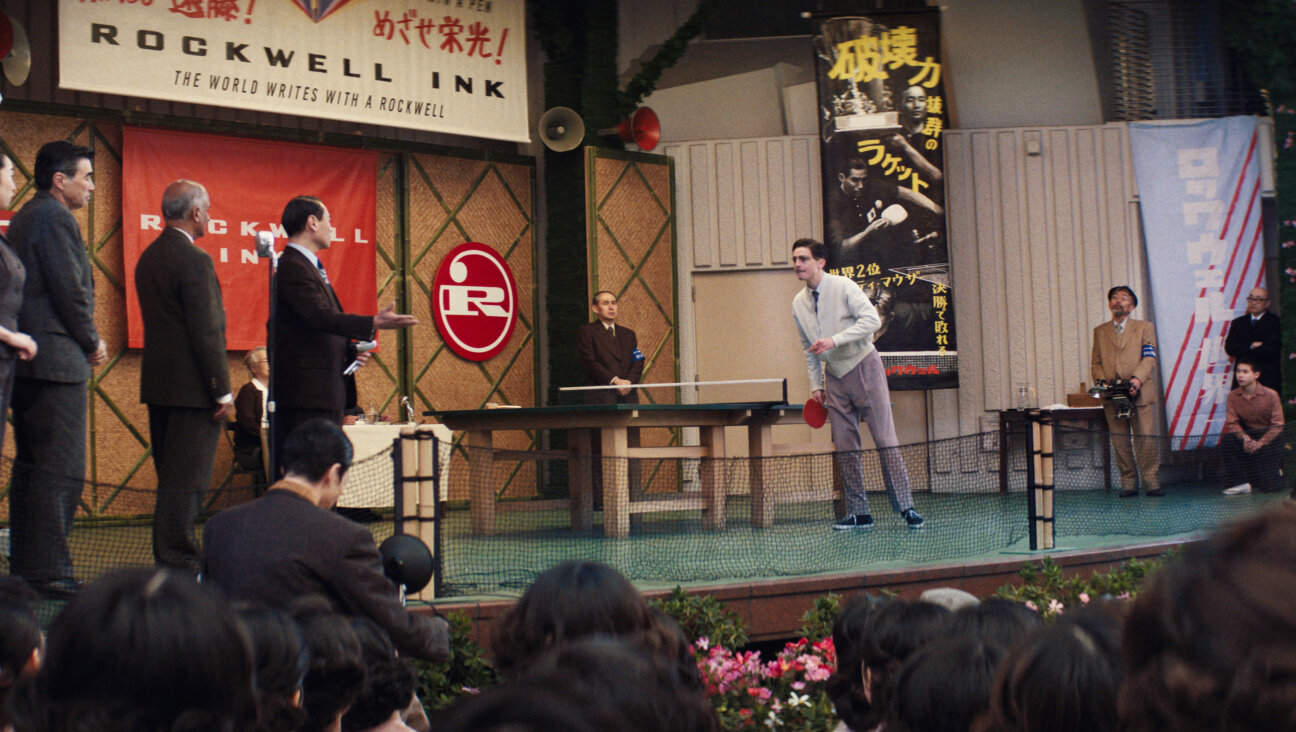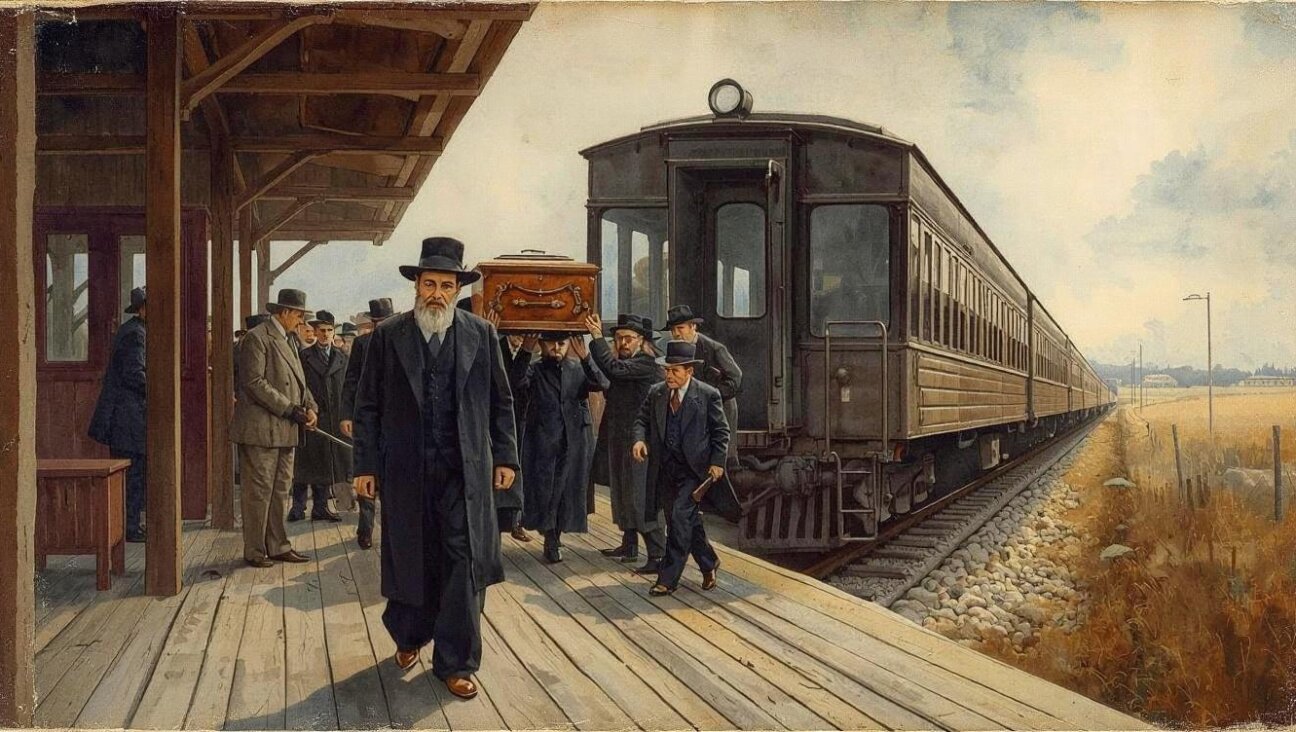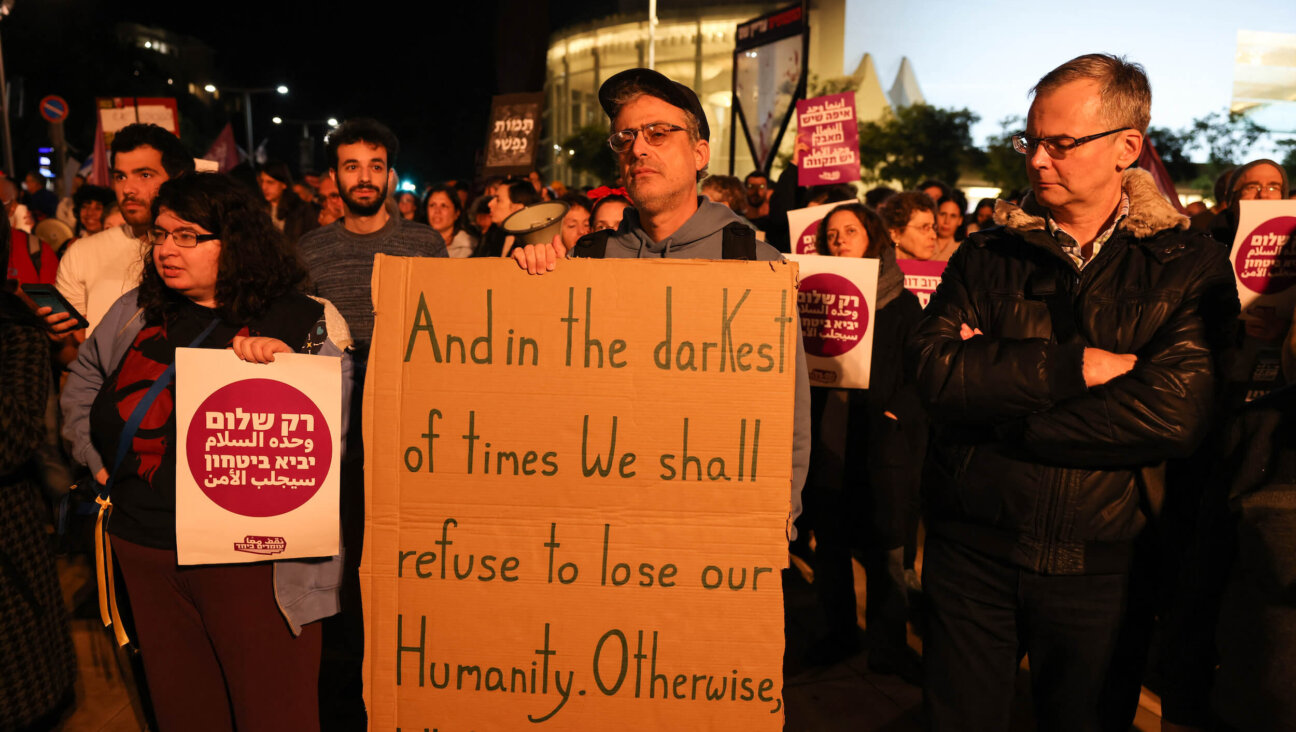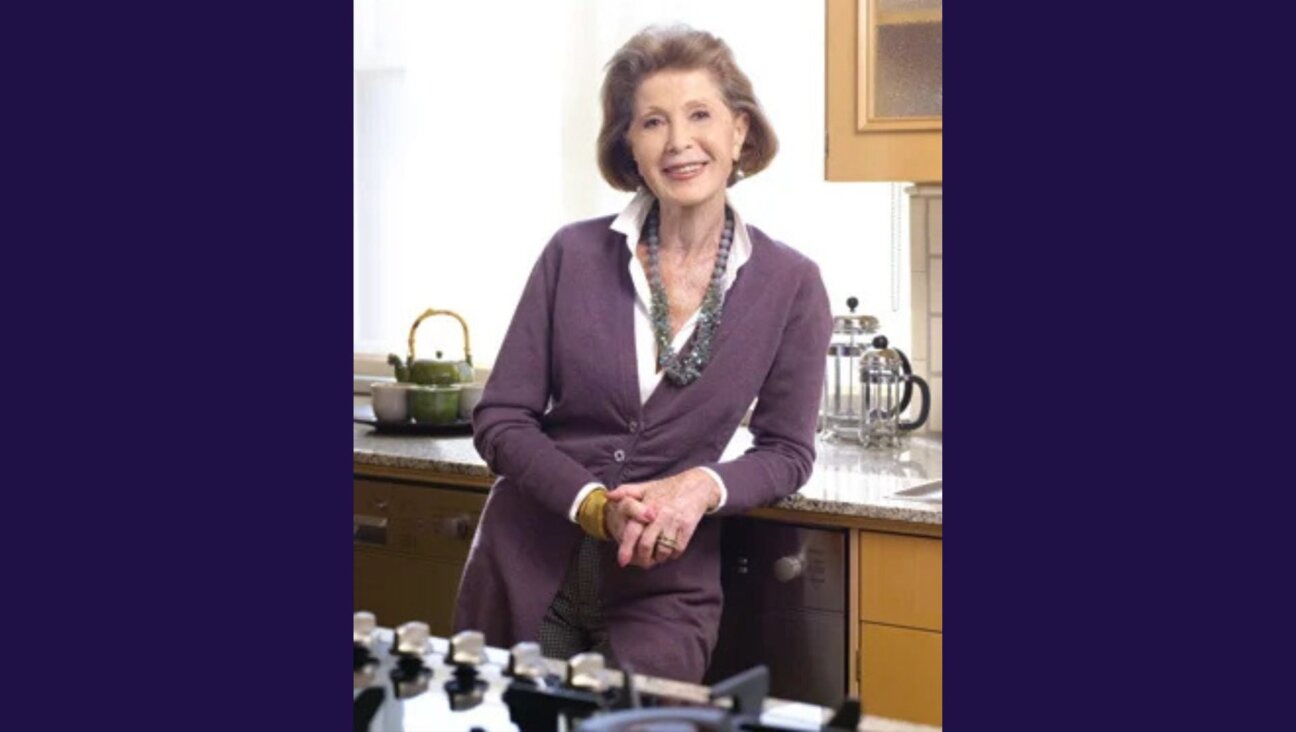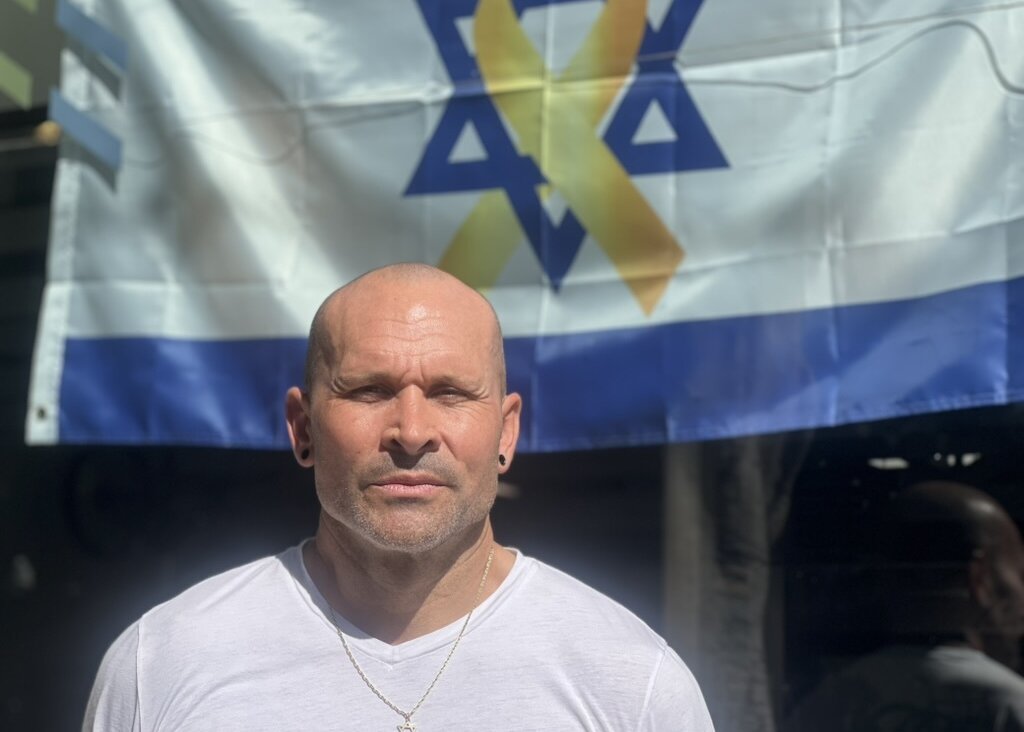At a seder by and for trans Jews, guests define liberation for themselves
Liberation Now: A Trans+ Seder is a first of its kind event that aims to elevate transgender, nonbinary and gender nonconforming Jews
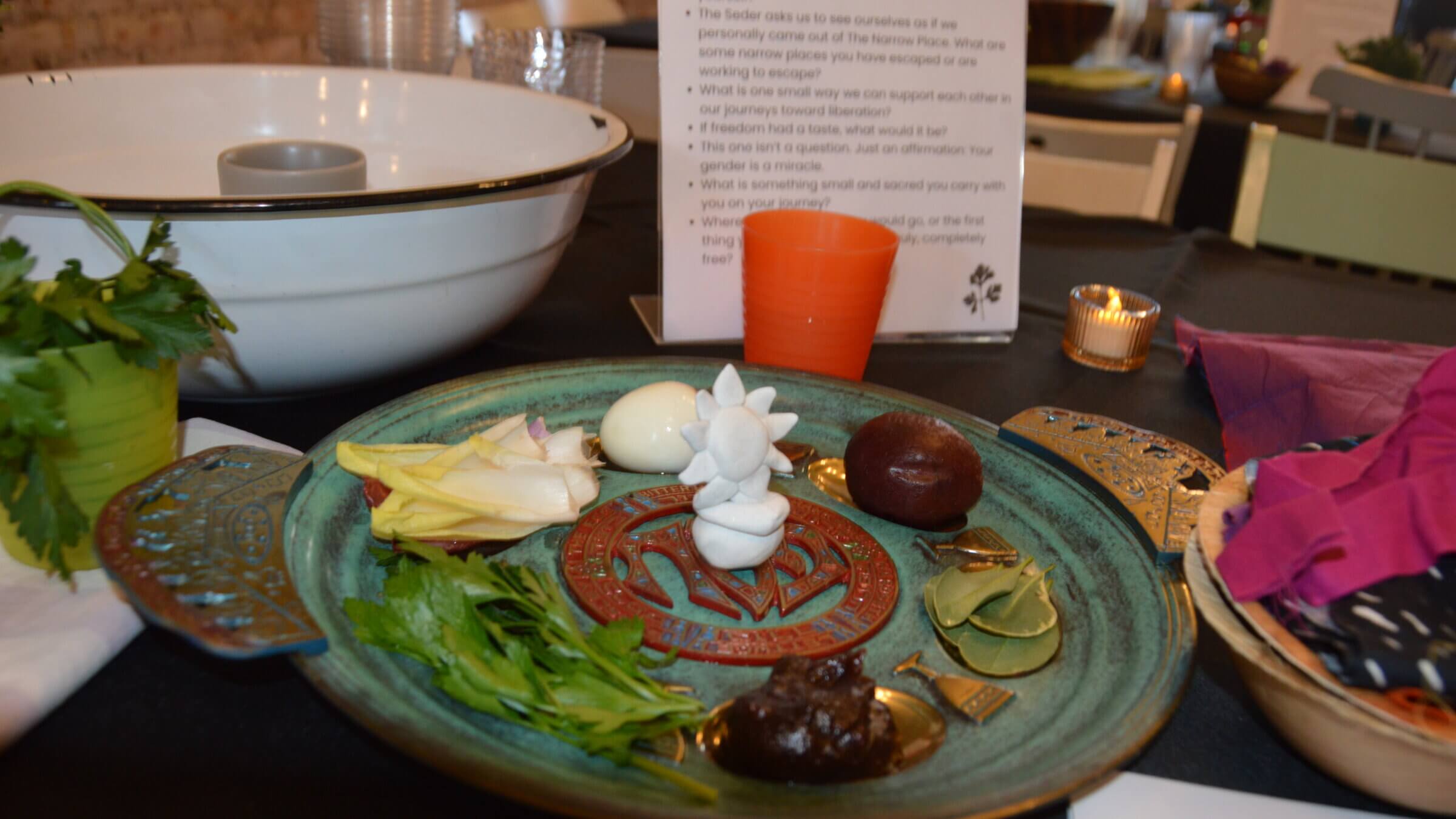
At a trans-affirming seder in Gowanus, Brooklyn, guests could make their own additions to the seder plate using Model Magic. Photo by Samuel Eli Shepherd
The centerpiece at Wednesday night’s dinner in Brooklyn had all the fixings of a traditional seder plate: fresh leaves of parsley to dip in salt water, a dollop of mushy charoset to represent the mortar enslaved Israelites used to build pyramids, even a hard-boiled egg — retrieved from a Trader Joe’s bag and plonked onto the side.
But instead of topping the plate off with something outside-the-box, such as a banana or a handful of cashews, the organizers of this seder had a different idea. Participants could use Model Magic to create their own item to add to their individual plate. Becs Prager, a guest at the seder, rolled up a few strands of white clay and made a dandelion.
“It’s a new addition that I saw this year on how to incorporate transness to the seder plate,” said Prager, 30, a graphic designer. They got the idea from Rabbi Eliana Kayelle, which they learned about through an Instagram post on a queer, Jewish advocacy account.
“I’ve been to many seders in my life,” said Prager, who had just moved to Brooklyn six months ago from Austin, Texas. They said this event was their first major Jewish gathering in the city. “This one brought me such community and nuance and introduced me to a whole new way of celebrating my transness.”
The customizable seder plates — honoring tradition, but with a flair of individuality — were just one example of how Liberation Now: A Trans + Seder blended traditional Jewish rituals with inclusivity and creativity. Instead of trying to change Jewish customs to be more inclusive of trans, gender nonconforming and nonbinary people, the organizers aimed to prove how Jewish texts and beliefs have long embraced a trans-affirming worldview.
“We’re not adding trans people into the ritual, but instead we’re uncovering and revealing where trans people have always existed within the practice,” said Ami Weintraub, 29, a rabbinical student at Aleph Rabbinic Ordination Program in Philadelphia who co-organized the event. “Passover is about liberation, about freedom, and about revealing who you are and your fullest self,” he said.
The inaugural event aimed to find an affirming space for “trans +” people, an umbrella term which includes transgender, nonbinary and genderqueer people. Since the event was intended specifically for trans Jews, who may be dealing with different levels of openness and safety about disclosing their identities, the event was open exclusively to members of the ‘trans +’ community.
At the seder, which took place at a rented-out church and dining space in Gowanus, Brooklyn, candles and vases of flowers sat on black tablecloths. Passover Haggadahs were placed onto each chair, and each table also included a zine by activist Michael Bazant including poetry and essays about trans, Jewish identity. As guests arrived, they wrote their names on tags with personal pronoun stickers. Diners noshed on kosher, vegan Asian food, and for dessert, plates of macarons and jelly fruit slices. People strummed on a guitar or played percussion instruments during songs.
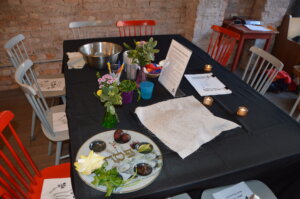
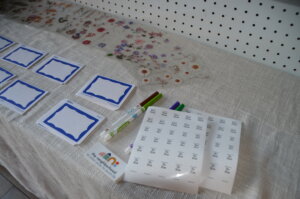
“ Having flowers and a decadent meal, like you’re not just accepted, you’re celebrated, you’re royalty here,” said Martine Duffy, the programs manager at the Neighborhood, a Brooklyn Jewish arts and culture organization that helped organize the event.
Duffy said that Passover was their favorite holiday.
“I remember one year I was so sad that it was over that I was crying,” they said. “And when we were leaving my grandparents’ apartment, my Bubby said to me, ‘On Passover, if you cry, you drink the tears.’”
To Duffy, “drinking the tears” was an apt metaphor for how transgender Americans were responding to a politically fraught moment.
Since January, the Trump Administration has begun to roll back rights and protections for transgender citizens, barring them from military service and signing an executive order aiming to ban transgender minors from seeking gender-affirming care. In Texas, a proposed law would make it a felony to identify as transgender. Some transgender Jews and their families have even considered leaving the United States to ensure their safety.
The Haggadah, which Duffy and Weintraub compiled, includes the four blessings over the wine, songs like Chad Gadya, Ma Nishtana and the Passover story in full. It also includes discussion questions to stimulate discussion on liberation, such as, “How might we, as members of marginalized communities, use the privilege we do have to further lift up those being oppressed?”
Another section of the Haggadah includes an essay on the concept of “Tumtum,” a term used by rabbis in the Mishnah to identify people who were born neither male nor female.
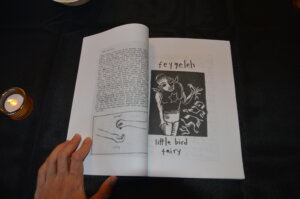
“Trans people actually historically have been holy in Judaism,” Weintraub said. For example, the Mishnah permits people who are neither men nor women to enter the temple while impure, whereas cisgender people cannot. “We’re not just saying this in like this kind of like political statement, but like, no, no, this is actually part of our tradition,” they added.
The seder, which was attended by about 30 people, concluded with the line, “Next year in liberation, next year in ____.” The organizers said they kept the final line blank so attendees could imagine what liberation looks like for themselves.
“Passover is about liberation,” Duffy said. “We have to imagine ourselves as being right on the brink of that liberation happening, even though we can look around and see that is probably not the case.”
Olivia Haynie contributed reporting.

